
Project 1: Sustainability and the Circular Economy
Scholarly research in the field of sustainability, consumer behavior and circular business models.
I took Victor Papanek's quote to heart and pursued a master's degree in sustainability. This is the research and work I developed for my thesis and dissertation.
“Advertising design, in persuading people to buy things they don't need, with money they don't have, in order to impress others who don't care, is probably the phoniest field in existence today.”
― Victor Papanek, Design for the Real World: Human Ecology and Social ChangeintroWe certainly can't buy our way out of the environmental crisis we're facing.
But it was my experiences designing for many consumer packaged goods (CPG) brands and building my own brand of consumer goods that led me to focus my graduate school research (2017-2020, Arizona State University, School of Sustainability) on consumer behavior, specifically within circular business models. The consumer should be viewed as an enabler, a key stakeholder, within a CPG circular business model. Generally, legislation is viewed as a necessity for adoption of these models while much of the scholarly research in the area of the circular economy does not take the consumer into account. My thesis research looked at two things what motivates a consumer to participate in a circular business model and what is the relationship between that motivation and the behavior.
In order to complete my research I secured interviews with 13 individuals who are consumers of cleaning products with circular business models that remove single use plastics from the waste stream.
I identified several brands that were available to US consumers, and sought out consumers based on comments they had made on social media within each brand's Facebook or Instagram page.
strategy1. Starting Point: Pick a lane, review the existing literature
I chose to focus my research specifically in the area of household cleansers. In recent years I had seen a lot of growth in brands entering into this market with disruptive business models. To make sure I wasn't reinventing the wheel, I did a deep dive into several areas of research: circular business models, sustainable consumption, fast-moving consumer goods, socio-technical systems and the household cleanser market. My main findings highlighted that a circular business model is not, by default, a sustainable business model. A consumer participating in a these business models may not even be aware that they are making a sustainable consumption decision. And that circular business models for fast-moving consumer goods specifically, can be quite different from other circular models due to the short lifespan and use phase of these types of products.
2. Is this going to work? Finding the right audience.
Finding the right people to interview for this research was by far the most difficult part of this process. I began by reaching out to the brands I identified as disruptors in this field to try to structure a way to identify consumers, this strategy failed. So I took to social media. I first reached out to consumers on twitter that had tweeted a hashtag identifying they used a particular brand—I received no responses. Next I messaged Facebook users that had commented on a particular brand's Facebook page indicating they used the product. This outreach was successful. I used a similar method of messaging via Instagram and received similar positive responses on that platform as well. Through this process I was able to identify 13 users that were willing to participate in a phone interview.
3. Methods: Interviews and qualitative text analysis
My goal was for the interview to flow like a natural conversation. First build rapport with the subject, gather a base level of data about the subject’s household and lifestyle and create opportunities for the subject to describe their purchasing decisions, allowing them to communicate activities and circumstances that build a narrative to support motivations. Each question fell into one of five categories: needs, sentiment, behavior, motivation, and persona. The interview also included a set of topics to be rated on a Likert scale indicating how important the subject views each topic to be.
Audio from each interview was recorded and later transcribed. The transcribed text was analyzed and common categories were pulled from the interviews inductively. I developed summaries of the coded statements which were then analyzed in a thematic matrix and common values, norms, and beliefs were identified from the explanation of all past and current consumption behaviors.
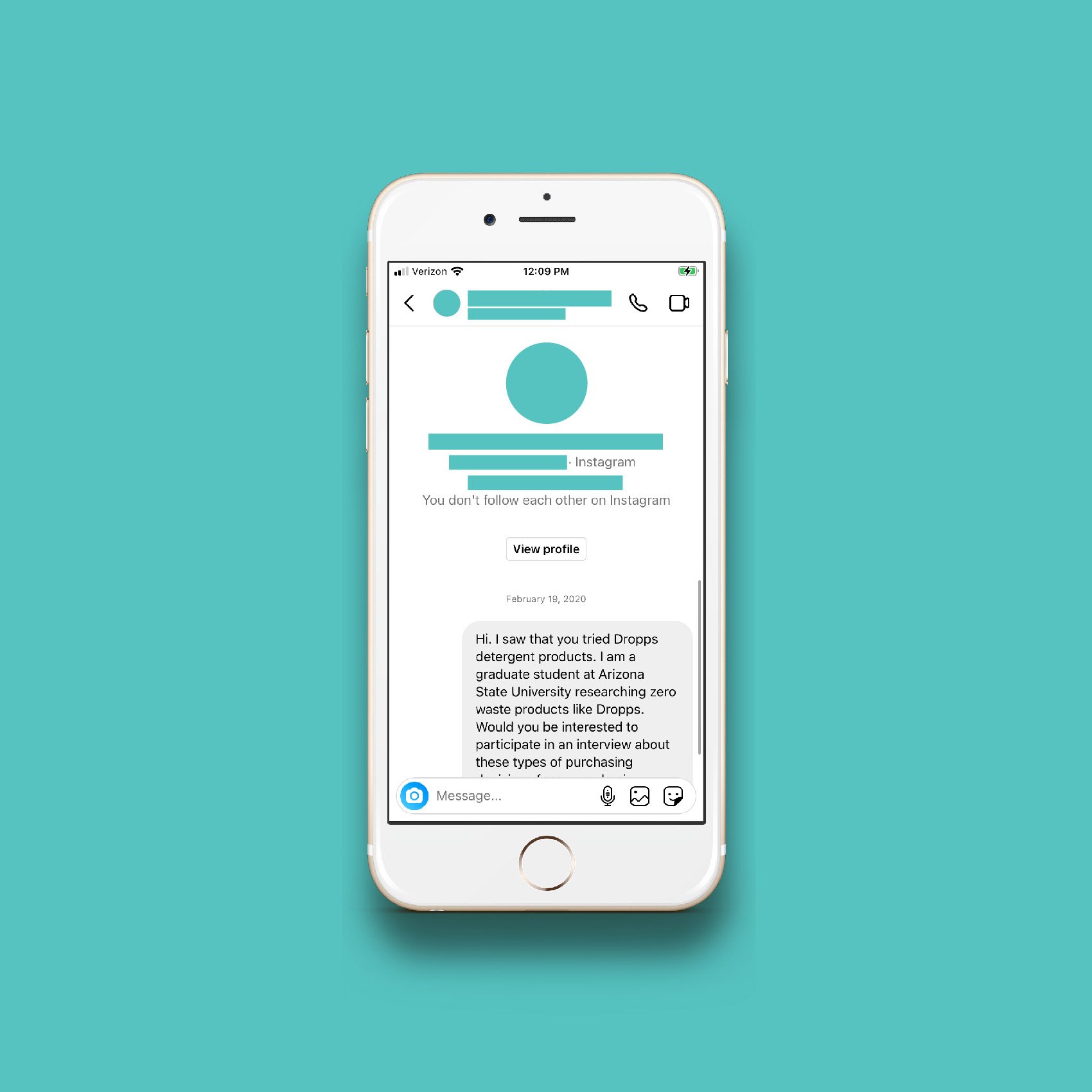
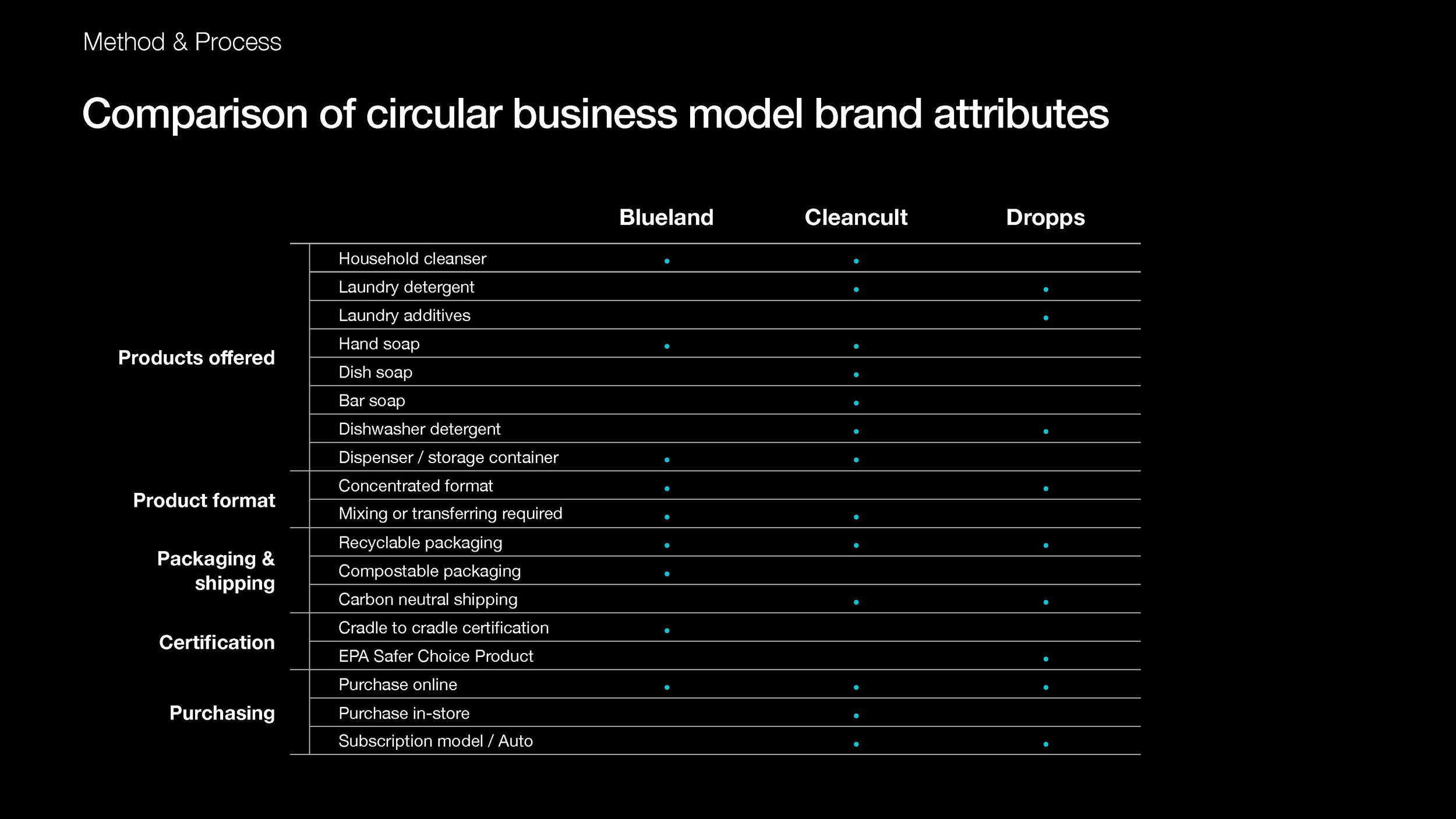
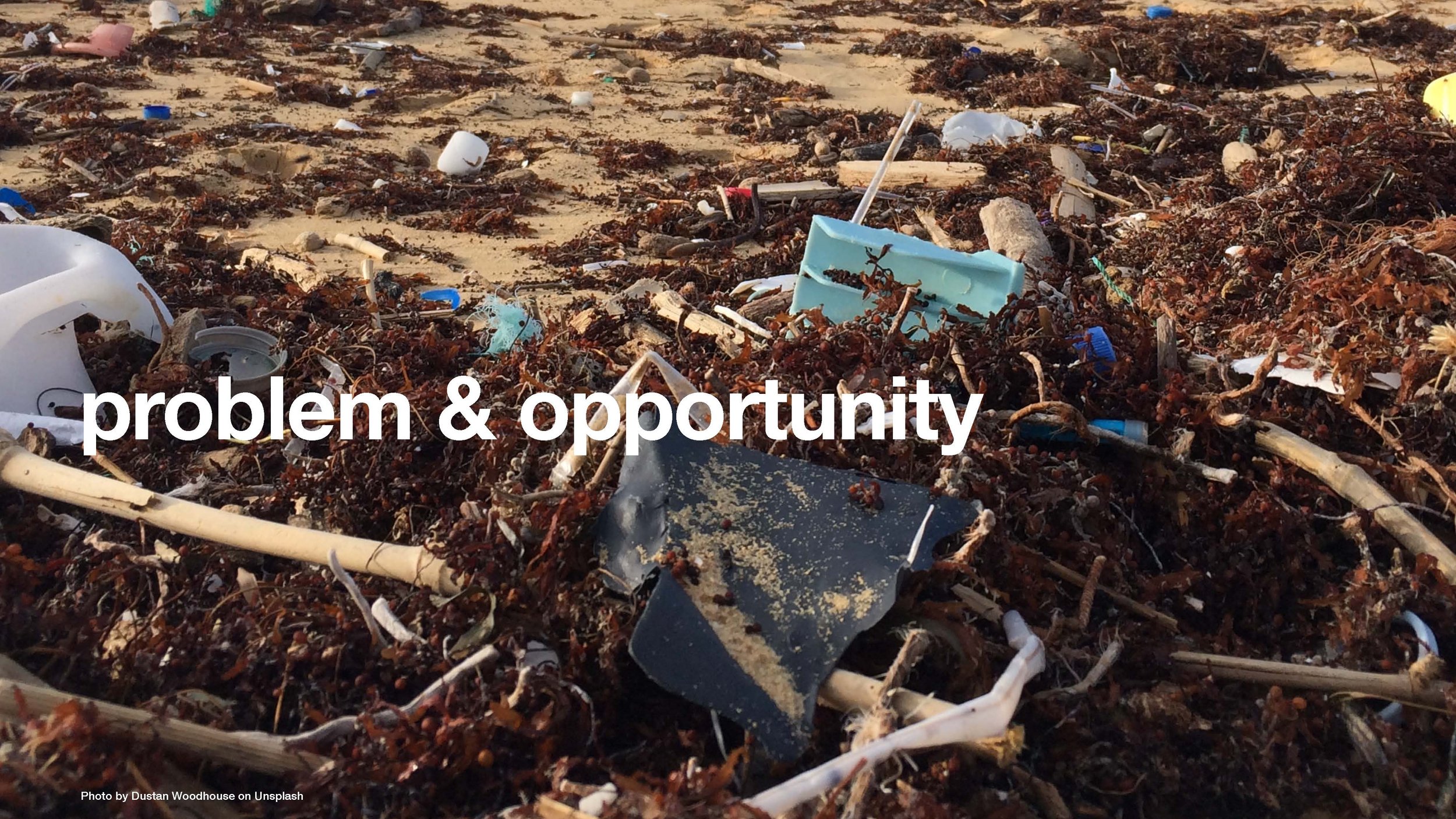
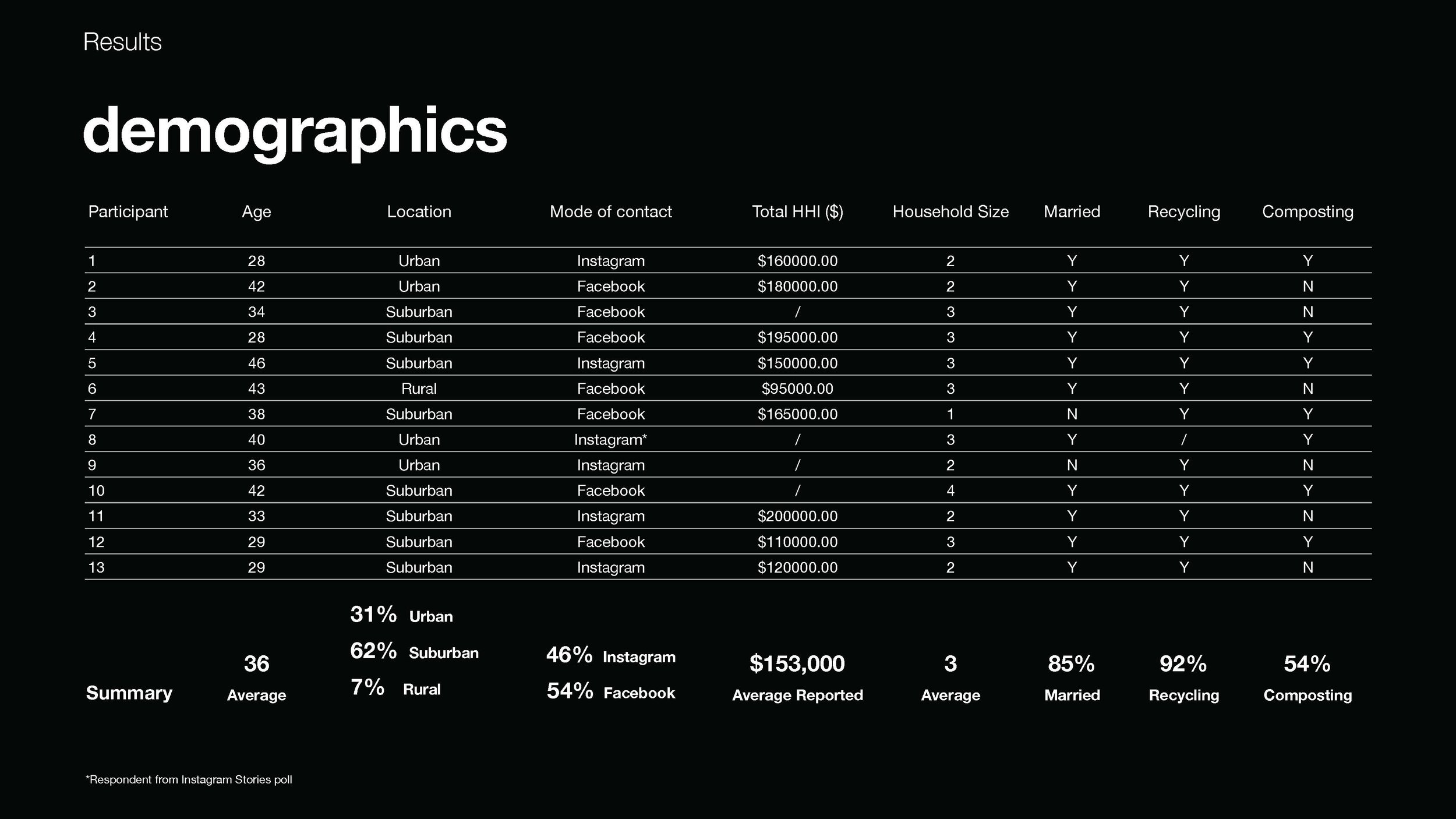
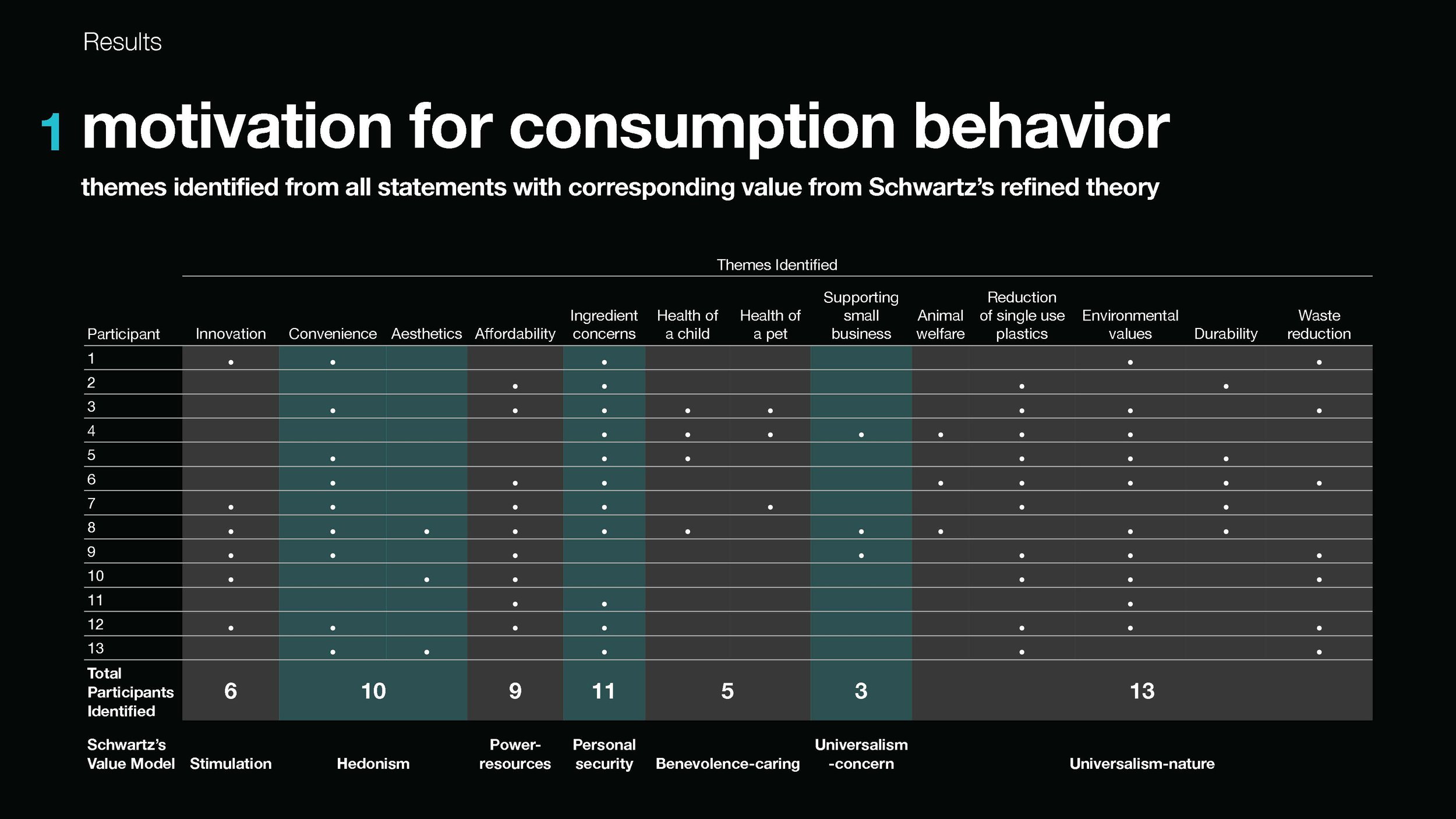

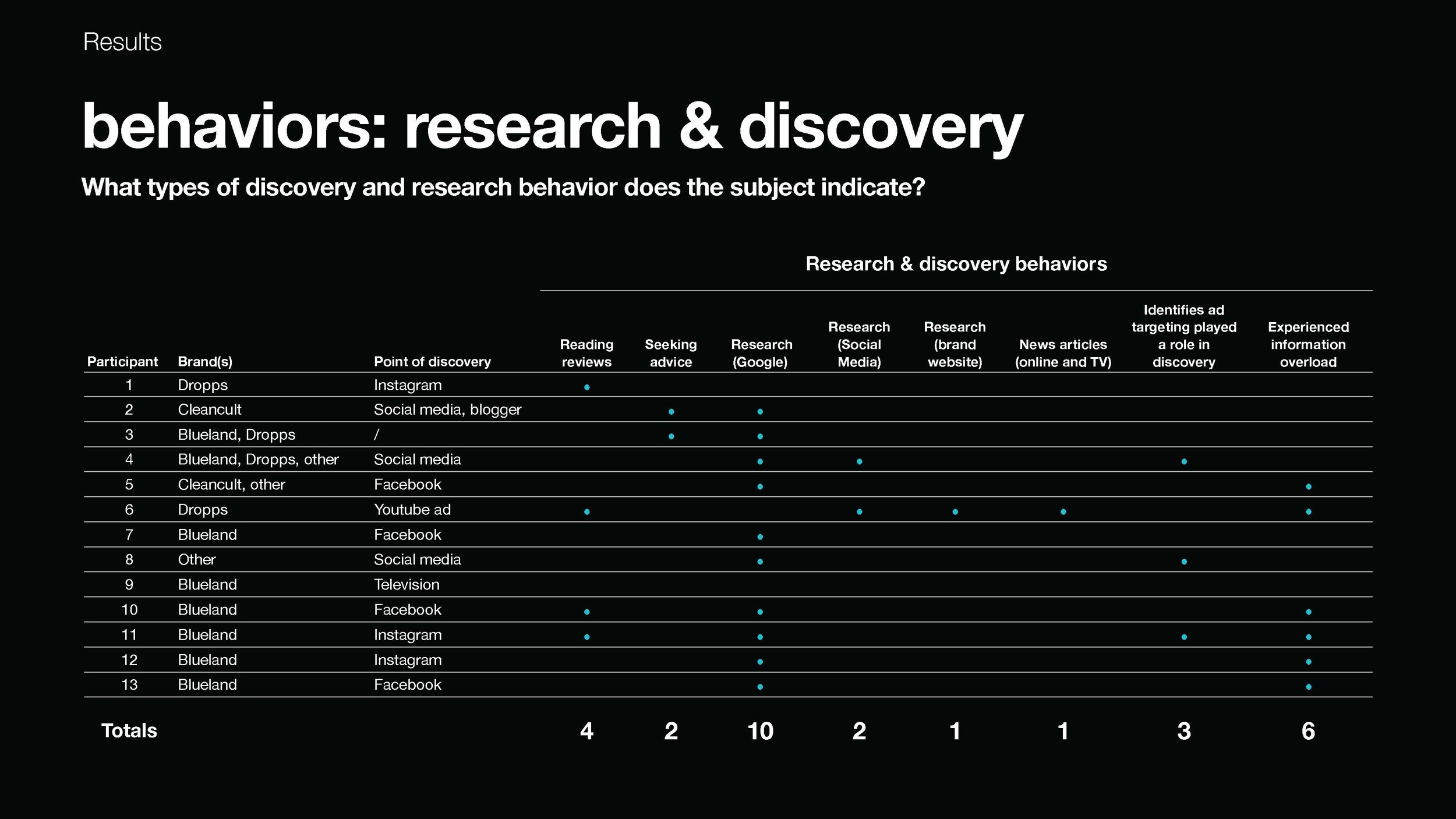
Outcomes
The results from this research showed that this group of consumers are motivated to participate in these circular models by their proenvironmental values and desire to maintain personal safety balanced with contextual factors like convenience and affordability. This group sometimes self-labels or identifies themselves as environmental. Because of this, they can experience frustration when their values are at odds with their purchasing behavior. They can also experience frustration in the research and discovery phase in the form of information overload.
The goods they are purchasing can hold symbolic value and speak to their identity as a proenvironmental person. But they can also be motivated simply by the symbolism of less; seeing less trash, or consuming less. These consumers may even be motivated to share about their sustainable purchases online in order to share their identity as a proenvironmental or safety conscious consumer. When circular business models point to sustainable development, they attract sustainable consumers, that are looking to align their values with their everyday purchasing decisions.